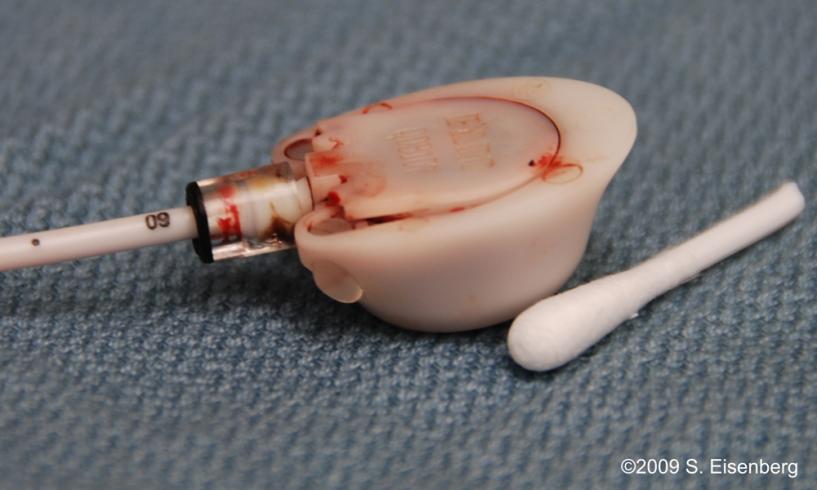Louise arrives in your office for her chemotherapy treatment with doxorubicin and paclitaxel. You access her implanted port without difficulty and obtain a brisk blood return. However, when you begin to flush with normal saline, she complains of severe burning.
What Would You Do?
A brisk blood return should be present for establishing patency when administering chemotherapy, particularly important for the administration of vesicants (Schulmeister, 2010). However, pain associated with flushing a catheter indicates a serious problem. In this case, the nurse caring for Louise contacted the physician, who ordered a dye study. The study revealed that the rear of the port had fractured (see photo).
Although not common, fractured ports have been documented in the literature (Zamavar, Lazonby, Arthur, Elliott, & Puntis, 2009). Leakage can occur from the catheter or from the port body itself, as with Louise’s port. Ports can fracture because of high pressure, such as from administration of contrast in non-power injectable ports or from flushing with syringes smaller than 10 mL.
Louise’s nurse did not use the port for chemotherapy despite having a good blood return. Instead, she listened to her patient’s complaint of discomfort and followed up with the physician.
- Schulmeister, L. (2010). Management of non-infectious central venous access device complications. Seminars in Oncology Nursing, 26(2), 132–141. doi: 10.1016/j.soncn.2010.02.003
- Zamavar, V., Lazonby, G., Arthur, R., Elliott, L., & Puntis, J. (2009). Central venous catheter fracture presenting as pain on flushing. European e-Journal of Clinical Nutrition and Metabolism, 4. doi: 10.1016/j.eclnm.2009.08.003






